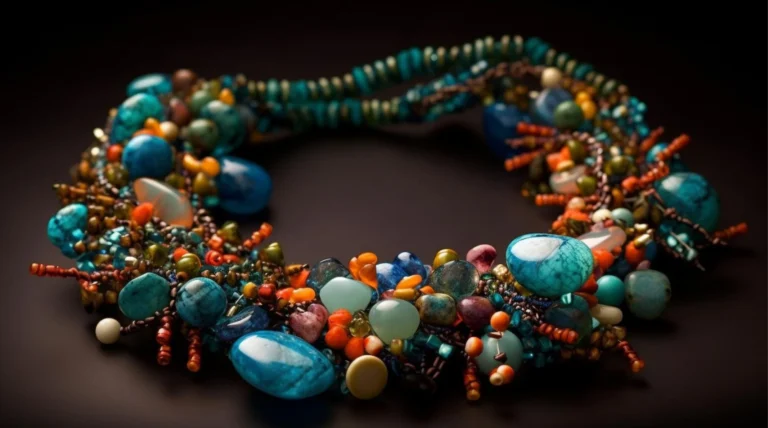Visuals hold great importance in attracting consumers. Therefore, having a captivating product presentation is crucial. With the emergence of computer-generated imagery, CGI in short, businesses can now explore a realm of creative possibilities that was previously unimaginable. Read the article below to learn about CGI 3D product rendering.
Understanding CGI and its significance

Computer-generated imagery is a revolutionary tool, transforming how products are showcased and marketed.
Simply put, it involves the creation of digital visual content through sophisticated computer software, enabling the crafting of hyper-realistic representations that defy the limitations of traditional photography.
Consider, for instance, the automotive industry’s embrace of CGI to visualize vehicles in diverse environments, from bustling city streets to rugged off-road terrains, long before they roll off the assembly line. This offers a quantum leap in presentation quality and flexibility.
By leveraging computer-generated images, businesses can sidestep the constraints of physical prototypes, ushering in an era of cost-effective and highly adaptable product visualization.
This newfound freedom empowers marketers and designers to explore imaginative scenarios, such as showcasing furniture in elegantly designed virtual interiors or presenting electronic gadgets in futuristic settings reminiscent of science fiction films. Products with visually appealing, immersive designs resonate with consumers seeking captivating experiences during their purchasing journey.
In essence, CGI transcends mere representation, becoming a conduit for brands to visually communicate their narrative and ethos, ultimately driving engagement and sales.
Benefits of using CGI for showcasing products

Captivating product presentation is paramount to grabbing consumer attention and driving sales. The digital age has revolutionized how products are showcased, offering several benefits over traditional photography.
Beyond mere cost-effectiveness and creative flexibility, CGI opens up a world of possibilities for businesses looking to elevate their product marketing strategies. Here are the most important ones.
- Cost-Effectiveness: Traditional product photography often involves costly setups, including hiring photographers, arranging studios, and building sets. In contrast, CGI eliminates these expenses, offering a more budget-friendly alternative.
- Creative Flexibility: Computer-generated images offer the freedom to experiment with various styles, environments, and visual effects. Whether showcasing a product in a futuristic setting or altering its color and texture on the fly, it provides endless creative possibilities.
- Consistency and Accuracy: With CGI, every aspect of the product can be precisely controlled, ensuring consistency across different marketing materials. It can range from color accuracy to scale and proportions, allowing meticulous attention to detail.
- Unlimited Customization: 3D assets allow customization of every aspect of the product presentation, from the most basic ones, like colors and materials, to more complex ones such as lighting and composition. This level of customization ensures that each render is tailored to specific marketing goals and target audiences.
- Time Efficiency: Traditional product photography often requires extensive setup and coordination, leading to time-consuming delays. With CGI, products can be rendered quickly and efficiently, reducing time-to-market and enabling rapid iterations based on feedback. Moreover, our entire process is remote, therefore there’s no time wasted on mailing the products to and fro.
- Global Accessibility: CGI renders can be easily shared and distributed digitally, transcending geographical boundaries and reaching audiences worldwide. This accessibility makes it an invaluable tool for international marketing campaigns and online sales platforms.
- Enhanced Product Lifecycle Management: By creating digital replicas of products, businesses can effectively manage their entire lifecycle, from initial design concepts to post-production marketing materials. This holistic approach streamlines product development processes and ensures consistency across all stages.
- Virtual Prototyping: CGI enables virtual prototyping, allowing designers and engineers to visualize and refine products before they are physically manufactured. This iterative process reduces the risk of costly errors and ensures that final products meet quality standards and customer expectations.
- Environmental Sustainability: Traditional product photography often involves elaborate sets, props, and equipment, leading to significant resource consumption and waste generation. In contrast, going digital eliminates the need for physical materials, making it a more environmentally sustainable option for product visualization.
- Interactive Experiences: With advancements in technology, CGI can be integrated into interactive experiences such as augmented reality (AR) and virtual reality (VR) applications. This immersive approach allows consumers to interact with products in virtual environments, leading to higher engagement and conversion rates.
In modern marketing, computer-generated imagery has transformed product presentation. It’s cost-effective, flexible, and offers endless possibilities to enhance marketing strategies.
The step-by-step process of CGI 3D product rendering

The step-by-step process is a meticulous journey, blending artistry with technology to bring products to life in stunning detail. Understanding each stage of this process is essential for businesses looking to leverage it to elevate their marketing strategies and captivate audiences. So, without further ado, let’s jump right into them.
- Digital Modeling: The process begins with creating a digital 3D model of the product using specialized software like Autodesk Maya, Blender, or Cinema 4D. This involves defining the shape, dimensions, and details of the product.
- Texturing: Once the model is ready, textures are applied to simulate surface materials such as plastic, metal, or fabric. High-quality texture maps are crucial for achieving realistic results.
- Lighting: Lighting plays a pivotal role in CGI rendering, influencing the mood, atmosphere, and perceived quality of the product. Artists use lighting setups to create realistic shadows, highlights, and reflections.
- Rendering: With the scene set up, the next step is rendering, where the 3D software processes the scene to generate images. Rendering settings, such as resolution and quality, are adjusted to meet the desired output.
- Post-Processing: After rendering, the images undergo post-processing to enhance their visual appeal. This may involve adjusting colors and contrast while adding effects like depth of field or lens flares.
- Animation (if applicable): For dynamic product presentations or marketing materials, animation may be incorporated into the rendering process. This involves creating movement and interaction within the scene to showcase the product’s features or functionality.
- Integration with Real-World Elements: In some cases, CGI renders may need to be integrated with real-world elements, such as photographs or video footage. This seamless integration requires careful compositing and matching of lighting and perspective.
- Quality Assurance: Thorough quality assurance checks are conducted to ensure accuracy, consistency, and adherence to brand standards before finalizing the render. This may involve scrutinizing details such as texture alignment, lighting consistency, and overall visual fidelity.
- Client Feedback and Revisions: Once the initial render is complete, it is presented to the client for feedback. Based on client input, revisions may be made to fine-tune the render and ensure it aligns with the client’s vision and objectives.
- Final Output: After incorporating client feedback and making any necessary revisions, the final CGI render is produced. This high-quality output is suitable for use across various marketing channels, including print, web, and multimedia platforms.
- Archiving and Documentation: Finally, the completed CGI render, along with all associated project files and documentation, is archived for future reference and use. Thus, we can skip the rendering stage the next time we collaborate with you on your new project.
3D product rendering is a precise and creative journey that empowers brands to showcase their products in the digital realm. By mastering each stage, businesses can create compelling visuals that engage audiences and set new standards for digital product marketing. Through artistry, technology, and attention to detail, CGI offers unparalleled realism and impact.
Tools and plugins for 3D product rendering

To bring your creative vision to life you will need the right tool. While it is always better to leave it to professionals – you can try us for free and see how your products will look, if you want to take the matter into your own hands we’re here to help.
These tools offer several functionalities, from modeling and texturing to lighting and rendering, empowering professionals to create stunning visualizations with precision and efficiency. Here are some of the most popular tools and plugins used in the industry:
- Autodesk Maya: Widely regarded as one of the industry standards for 3D modeling, animation, and rendering, Autodesk Maya offers a comprehensive suite of tools for creating lifelike CGI renders. Its robust feature set includes advanced modeling capabilities, powerful animation tools, and a flexible rendering engine that supports CPU and GPU rendering.
- Blender: Blender is an open-source 3D creation suite that offers a full range of modeling, animation, and rendering tools. With its intuitive interface and extensive community support, Blender is a favorite among artists and designers for its versatility and affordability.
- Cinema 4D: Developed by Maxon, Cinema 4D is a popular choice for motion graphics and visual effects artists. Its intuitive interface, powerful modeling tools, and integrated rendering engine make it well-suited for creating photorealistic 3D product renders with ease.
- KeyShot: KeyShot is a standalone rendering software that specializes in producing high-quality, photorealistic renders quickly and easily. Its real-time rendering capabilities and extensive library of materials and textures make it a popular choice for product visualization projects.
- V-Ray: V-Ray is a rendering engine known for its exceptional realism and flexibility. It seamlessly integrates with popular 3D modeling software such as Autodesk Maya, Blender, and Cinema 4D, allowing artists to achieve stunning results with ease.
- Substance Painter: Substance Painter is a texturing tool that offers a range of features for creating detailed and realistic textures for 3D models. Its intuitive interface and procedural workflows make it ideal for artists looking to add depth and realism to their CGI renders.
- OctaneRender: OctaneRender is a GPU-accelerated rendering engine known for its speed and efficiency. It offers real-time feedback and interactive rendering capabilities, allowing artists to iterate quickly and achieve photorealistic results in less time.
- Arnold: Developed by Autodesk, Arnold is a powerful rendering engine used in various industries, including film, animation, and video games. Its advanced shading and lighting capabilities make it a popular choice for creating realistic CGI renders.
- Redshift: Redshift is a GPU-accelerated rendering engine known for its speed and scalability. It offers a wide range of features, including advanced shading, lighting, and rendering tools, making it suitable for high-quality CGI rendering projects.
- ZBrush: ZBrush is a digital sculpting tool that offers unparalleled flexibility and control for artists creating detailed 3D models. Its intuitive interface and powerful sculpting brushes make it an essential tool for creating realistic characters, creatures, and props.
These are just a few examples of the many tools and plugins available for CGI 3D product rendering. Each tool offers its unique features and capabilities, allowing artists and designers to choose the ones that best suit their workflow and project requirements. You can learn more about them in this article.
Tips for achieving photorealistic results

Achieving photorealistic results requires attention to detail, mastery of techniques, and a keen eye for realism. Here are some tips to help you elevate your renders to a new level of visual fidelity:
- Use High-Quality Textures: Invest in high-resolution texture maps to add depth and realism to surfaces. Textures should accurately represent the material properties of the product, such as roughness, glossiness, and reflectivity.
- Pay Attention to Lighting: Lighting is crucial for creating realistic shadows, highlights, and reflections. Experiment with different lighting setups to achieve the desired mood and atmosphere, and pay attention to how light interacts with different surfaces and materials.
- Focus on Detailing: Small details can make a big difference in the realism of a render. Add imperfections such as scratches, fingerprints, and surface irregularities to simulate wear and tear and add authenticity to the render.
- Optimize Rendering Settings: Balance rendering time with quality by adjusting settings such as sampling rate, ray bounces, and shadow quality. Higher settings will produce more realistic results but may require longer render times, so find the right balance for your project.
- Use Real-World References: Study real-world objects and environments to understand how light interacts with different surfaces and materials. Use reference images and observations to inform your rendering decisions and achieve a higher level of realism.
- Experiment and Iterate: Don’t be afraid to experiment with different techniques and iterate on your renders to achieve the desired outcome. Try out different lighting setups, camera angles, and composition choices until you find the perfect balance of realism and visual appeal.
- Consider Physical Accuracy: Pay attention to physical accuracy when modeling and texturing objects. Use real-world measurements and material properties to ensure that your renders accurately represent the physical characteristics of the product.
- Utilize Depth of Field and Motion Blur: Incorporate depth of field and motion blur effects to add depth and dynamism to your renders. These effects simulate the way a real camera lens focuses and captures motion, adding an extra layer of realism to your images.
- Fine-Tune Materials and Shaders: Experiment with different material settings and shaders to achieve the desired look and feel for your product. Adjust parameters such as roughness, and specular intensity to accurately represent the surface properties of the product.
- Seek Feedback and Critique: Don’t hesitate to seek feedback from peers, mentors, or online communities to get fresh perspectives on your renders. Constructive criticism can help you identify areas for improvement and refine your skills as a CGI artist.
By implementing these tips and techniques, artists and designers can elevate their CGI 3D product renders to achieve photorealistic results that captivate viewers and bring products to life in the digital realm.
How we can help

We understand the importance of captivating product photography in today’s competitive market. With a wealth of experience and expertise in CGI rendering, we are dedicated to helping businesses showcase their products in the best possible light.
Our team consists of highly skilled CGI artists and designers who excel in creating lifelike renders that showcase your products in exquisite detail. Whether you’re looking to highlight intricate textures, simulate realistic lighting, or create dynamic animations, we have the expertise to bring your vision to life.
We understand that every product is unique, which is why we offer customized solutions tailored to your specific needs and requirements. Whether you’re launching a new product line, updating existing visuals, or creating marketing materials for a campaign, we work closely with you to deliver results that exceed your expectations. You can test us for free before we begin our collaboration to ensure our skills match your project.
We recognize the importance of timeliness in today’s fast-paced market, which is why we strive to deliver high-quality renders promptly. With our efficient workflow and streamlined processes, we ensure that your project is completed on schedule without compromising on quality.
We believe that it’s the small details that make a big difference in product photography. From meticulously crafted textures to realistic lighting and shading, we pay close attention to every aspect of the rendering process to ensure that your products are presented in the best possible light. You can learn more about our process here.
We value collaboration and communication, and we work closely with you throughout the entire process to ensure that your vision is realized. Whether you have specific preferences or feedback, we welcome your input every step of the way to ensure that the final result meets your expectations.
Whether you’re a small startup or a large corporation, we have the skills and resources to bring your products to life in stunning detail and realism. Contact us today to learn more about how we can help you elevate your product photography with CGI.
Common challenges and solutions for 3D product rendering

Although you can leave all the CGI-related matters to us, if you want to jump right into it by yourself, you should know that several challenges can impact the quality and efficiency of your work.
Understanding these challenges and implementing effective solutions is essential for achieving high-quality results. Here are some common challenges and practical solutions to overcome them:
- Optimizing Render Times: Long render times can hinder productivity and delay project delivery. Utilize render farms to distribute rendering tasks across multiple machines, optimize scene complexity by using proxies for detailed objects, and adjust rendering settings such as sample rates and ray bounces to find the optimal balance between quality and speed.
- Managing Complex Materials: Managing complex materials and textures can lead to issues with file size, performance, and consistency. Employ procedural textures to generate complex surface patterns and details algorithmically, use texture baking to pre-calculate lighting and shadow information, and maintain a well-organized material library for easy access and consistency across projects.
- Dealing with Realism Issues: Achieving realism can be challenging due to factors such as uncanny valley effects, unrealistic lighting, and inaccurate physics simulations. Study real-world references to understand how light interacts with different materials and environments, utilize physically based rendering (PBR) techniques to accurately simulate material properties, and refine simulations through iterative testing and adjustments.
- Navigating Hardware Limitations: Limited GPU/CPU resources can restrict the complexity and scale of rendered scenes. Optimize scenes for specific hardware configurations by using efficient rendering algorithms and techniques, implement level of detail (LOD) systems to dynamically adjust scene complexity based on hardware capabilities, and consider upgrading hardware or utilizing cloud-based rendering solutions for resource-intensive projects.
- Handling Large Data Sets: Managing large data sets, including 3D models, textures, and simulations, can lead to issues with organization, performance, and storage. Maintain a well-organized file structure with clear naming conventions and asset hierarchies, implement asset management tools to track and organize assets efficiently, and utilize data compression methods such as texture atlasing and LOD techniques to reduce file sizes and improve performance.
By addressing these common challenges and implementing practical solutions, artists and designers can navigate the complexities of CGI 3D product rendering with confidence, achieving high-quality results that meet the demands of today’s competitive market landscape.
Wrapping up
In conclusion, CGI 3D product rendering offers a revolutionary approach to showcasing products, combining cost-effectiveness with unparalleled creative flexibility. By understanding the process, leveraging the right tools, and mastering key techniques, businesses can create stunning visuals that captivate audiences and drive sales in today’s competitive market landscape.
FAQ
What is CGI 3D product rendering?
CGI 3D product rendering involves the creation of lifelike digital representations of products using computer software. It allows businesses to showcase their products in various settings, under different lighting conditions, and from multiple angles with a high degree of realism.
Why should I use CGI for product rendering instead of traditional photography?
CGI offers several advantages over traditional photography, including cost-effectiveness, creative flexibility, and the ability to showcase products in any setting without the need for physical prototypes. CGI also allows for consistent and accurate product visualization across different marketing materials and platforms.
How long does it take to create a CGI 3D product render?
It depends on factors such as the complexity of the product, the level of detail required, and the artist’s proficiency with the software. Simple renders may be completed in a few hours, while more complex projects could take several days or weeks to finalize.
What software tools are used for CGI 3D product rendering?
Popular software tools for CGI 3D product rendering include Autodesk Maya, Blender, Cinema 4D, KeyShot, V-Ray, and Substance Painter. These tools offer a range of features for modeling, texturing, lighting, rendering, and post-processing, allowing artists to create realistic and visually appealing renders.
How can I ensure that my CGI renders look realistic?
Use high-quality textures, realistic lighting setups, and post-processing techniques to create real-world-like objects and environments. Additionally, seeking feedback from others and iterating on renders can help improve realism and overall quality.


























